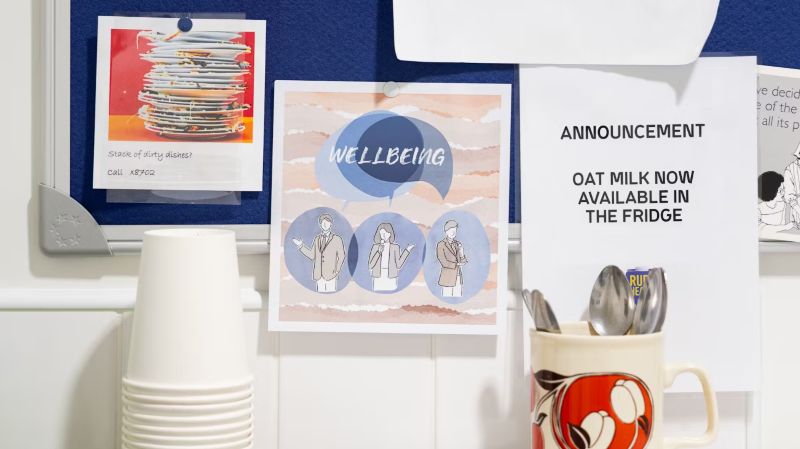Meditation practices won’t magically transform your life, but they can be effective tools to cope with stress.

By Dr. Padraic J. Dunne
Senior Lecturer, Centre of Positive Health Sciences
RCSI University of Medicine and Health Sciences
Introduction
It’s 10:45am on a Tuesday, and you are arriving late to work. You’ve just been to the dentist who berated you for grinding your teeth – she says this is what’s causing your sore jaw and neck.
You’ve been waking up between 2am and 4am most nights for the past month, and when you do, it’s hard to stop thinking about work. Your boss is becoming increasingly aggressive with you and you just can’t seem to focus. To make matters worse, your inner critic seems to be more vocal than usual.
This scenario, or variations on it, will be familiar to many people. Work stress may be particularly persistent for you if you’re younger and trying to make a good impression in your workplace.
Without discounting the value of discussing problems you’re having at work with relevant superiors, meditation practices can do a lot to help you manage your stress in situations like these.
Extensive research supports the positive effects of meditation techniques including mindfulness, attention-based meditations and meditations that cultivate compassion.
1. Mindfulness
Mindfulness is the practice of observing your internal realities (thoughts, emotions, memories and sensations) and external realities (social and physical environment) in a nonjudgmental way. It has been shown to improve anxiety, stress, insomnia and pain, among others.
Cultivating awareness of your body regularly (an internal reality) can help catch negative physical symptoms early. For example, grinding teeth is often associated with tight muscles around the jaw, neck and shoulders. If you pay attention to your body, you can detect the early stages of stress-induced muscle tightening and consciously relax them.
A simple but effective mindfulness-based technique is the body scan. Spend some time each week (at least two minutes) bringing your awareness into the toes of both feet, slowly moving up your body, checking in as you go, until you reach the top of your head.
You can find thousands of guided body scans online, and you can use this technique anywhere, including at work.
2. Attention-Based Meditation
This practice usually involves using some kind of anchor to help maintain a central focus in the mind. Anchors can include the breath, a mantra or phrase such as “I am here now”, or an image, like a candle flame (real or digital). Each time you become distracted with a thought, memory, emotion, image or sensation (such as an itchy foot), return to the anchor.
You can practise this anywhere, with eyes open or closed. Start with 60 seconds twice daily and build from there. Don’t expect the mind to be quiet – it won’t be. Your job is to return to your chosen anchor.
Research has shown that practising meditation can improve emotional regulation, which may help you to better manage stressful situations at work and boost your focus. A study I did with colleagues found that an attention-based meditation programme reduced stress, anxiety and burnout in emergency medicine doctors compared with a control group that didn’t undergo the programme.

Using the breath in particular as an anchor can reduce stress by calming nerves associated with the fight or flight response, which takes charge when we’re anxious.
This technique can be especially useful if you’re having trouble sleeping. Equalising the breath (breathing five seconds in and five seconds out, for example) while practising attention-based meditation can help you disengage from cyclical thinking in the middle of the night and fall back to sleep.
3. Meditation to Cultivate Compassion
Our inner critic can become very vocal during times of stress. It’s useful to disengage from this voice using attention-based meditation. During difficult times, you should also cultivate compassion for yourself, as a person who makes mistakes (like every other human).
Find a quiet place and sit or lie down. Set a timer for two minutes. Close your eyes, equalise your breathing (five seconds in and five seconds out) and then try to picture your own face.
Physically smile at your face and imagine it smiling back at you. Wish yourself health and happiness. Realise that you are a human being who deserves love and respect. Your inner critic might disagree, but do your best to disengage from this voice.
Sometimes, this practice can also help us manage difficult emotions related to other people. Remember, your boss is likely to be just as vulnerable to stress as you. We can use this practice to conjure up their face, smile (physically and internally) and wish them health and happiness.
A word of caution: don’t try this for bullies or people who are abusive towards you. In extreme cases like these, we need to be careful not to provide internal excuses for people who cause us harm. Discuss this with a healthcare professional like a counsellor or psychotherapist first.
For maximum effect, you need to use the right tool for the right job. Some weeks, you might have to use all three tools on a daily basis. For calmer weeks, you could practise for two minutes on Mondays and Fridays, checking in with your body and mind to make sure all is well.
Like any skill, the more you practise, the more proficient you will become. Most of all, be kind to yourself.
Originally published by The Conversation, 07.11.2023, under the terms of a Creative Commons Attribution/No derivatives license.







